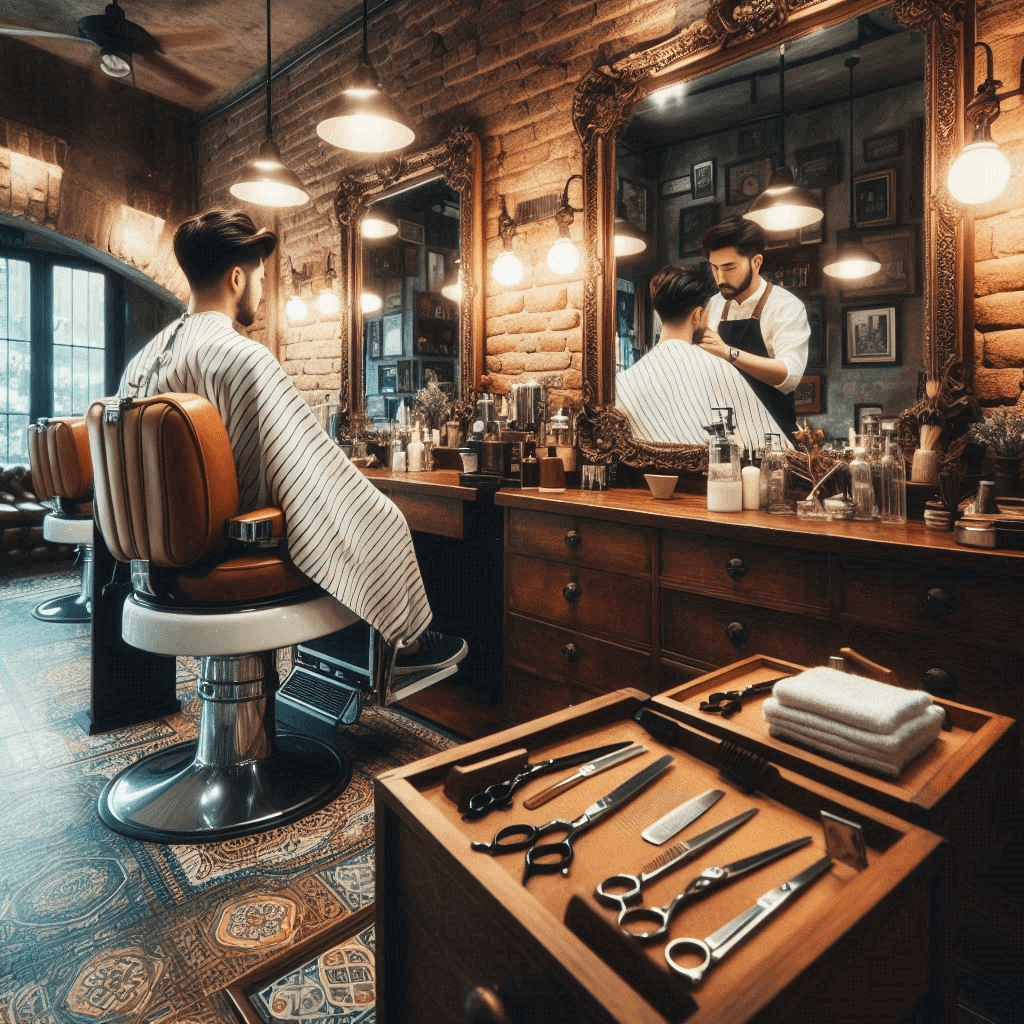Finding Your Routine Establishing a hair care routine involves understanding your hair type, lifestyle, and specific hair needs. Here’s a detailed guide to help you tailor your hair care routine to suit you:
Key Factors to Consider
Hair Texture and Type:
Straight: This hair type usually gets greasy quickly as natural oils move down the hair shaft faster. It requires regular cleansing to prevent oil buildup.
Wavy: A balance between straight and curly, this hair type may need both moisture and frizz control products.
Curly: Prone to dryness and frizz due to the structure of the hair, which makes it harder for natural oils to travel down the strands.
Kinky: Typically the driest hair type, needing a lot of moisture and gentle handling to prevent breakage.
Chemical Treatments:
Dyed or Bleached Hair: These hair types are more fragile and prone to dryness. They require less frequent washing and more nourishing treatments to maintain health and color.
Styling Preferences:
If you frequently use heat styling tools like straighteners or curling irons, it's crucial to incorporate heat protectant sprays to minimize damage.
Specific Concerns:
Issues such as frizz, dry scalp, or damaged ends require targeted treatments and specialized products to address them effectively.
Basic Hair Care Steps
Cleansing:
Purpose: Remove oil, dead skin, and product buildup without stripping away natural oils.
Frequency: Varies by hair type. Over-washing can lead to dryness and damage, so it's essential to find a balance that keeps your hair clean but not stripped of moisture.
Conditioning:
Benefits: Moisturizes hair, detangles, adds shine, and reduces frizz. Regular conditioning helps maintain hair health.
Application: Apply conditioner primarily to the mid-lengths and ends to avoid a greasy scalp.
Moisturize and Seal:
Process: Use a hydrating product followed by an oil to lock in moisture. This step is particularly beneficial for curly and kinky hair types that need extra hydration.
Detangling:
Tools: Use a wide-tooth comb or detangling spray to gently remove knots and tangles without causing breakage.
Styling and Protecting:
Utilize products like mousse, wax, pomade, or gel to achieve desired styles. Always protect your hair from heat with a heat protection spray when using styling tools.
Spot-Treating:
Address specific issues, such as frizz or dryness, with specialized treatments like protein treatments or nourishing masks.
Product and Tool Options
Cleansing:
Clarifying Shampoo: Deep-cleans to remove buildup but should be used sparingly, about once a month.
Daily Shampoo: Suitable for regular use, though not necessarily every day.
Daily Conditioner: Rinse-out conditioners provide regular hydration and manageability.
Leave-In Conditioner: Offers prolonged nourishment without rinsing out.
Deep Conditioner: Provides intense hydration for very dry or damaged hair.
Moisturizing and Sealing:
Hair Lotion: Cream-based protection from dryness and breakage with a light hold.
Oil: Locks in moisture and enhances natural oils, adding strength and shine.
Detangling:
Wide-Tooth Comb: Reduces breakage, especially when hair is wet.
Detangling Spray/Serum: Eases combing and adds softness for smoother detangling.
Styling:
Mousse: Adds volume and texture, suitable for enhancing curls.
Wax: Provides a stronger hold with increased shine.
Pomade: For sleek, long-lasting styles.
Gel: Offers varying hold strengths and texture.
Dry Shampoo: Absorbs oil between washes, but can build up on the scalp if overused.
Volumizer: Lifts hair for a fuller appearance.
Texturizer: Adds texture and preserves styles.
Shine Serum/Spray: Gives a glossy finish from the ends up.
Hair Spray: Holds styles in place and can address frizz.
Heat Protection Spray: Shields hair from heat damage during styling.
Treatments:
Scalp Treatment: Exfoliates and stimulates circulation, used monthly.
Protein Treatment: Strengthens and smooths frizzy or damaged hair, used monthly.
Targeted Mask: Deeply nourishes and addresses specific issues like split ends or dryness.
Consistency and Order
Routine Order: Apply shampoo, conditioner, and any in-shower treatments first. Follow with leave-in treatments, heat protection, and styling products.
Consistency: Regular use over time is essential for the best results. It can take a few weeks for hair to adjust and show improvements.
Changing Needs Over Time
Age and Hormonal Changes: Hair texture and needs change with age and hormonal fluctuations, such as during pregnancy or menopause.
Seasonal Adjustments: Switch to richer, more hydrating products in winter and lighter, humidity-resistant formulas in summer.
General Tips
Regular Trims: Every 6-8 weeks to prevent split ends and promote healthy growth.
Warm Water: Avoid hot water to prevent dryness and color fading.
Diet: Ensure intake of protein, iron, vitamins A and C, and omega-3 fatty acids for healthy hair.
Natural Methods: Limit heat styling and tight hairstyles to reduce damage.
Conclusion Establishing an effective hair care routine takes time and experimentation. By understanding your hair type, using the right products, and maintaining consistency, you can achieve healthy, manageable hair.
To know more, read the detailed article on Healthline by clicking below

